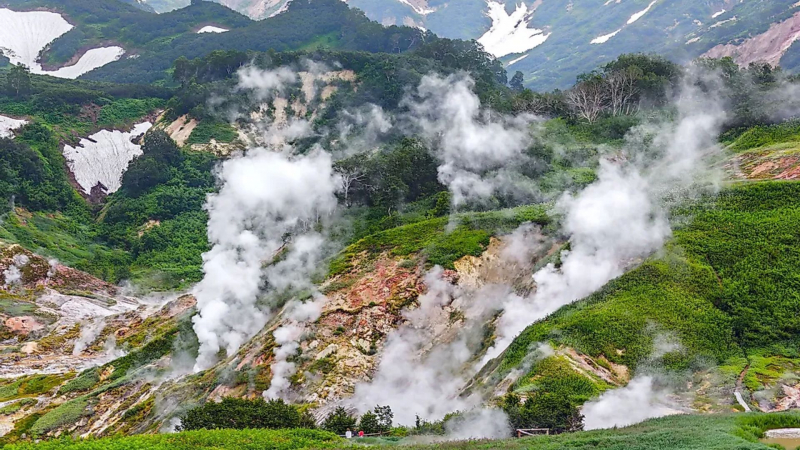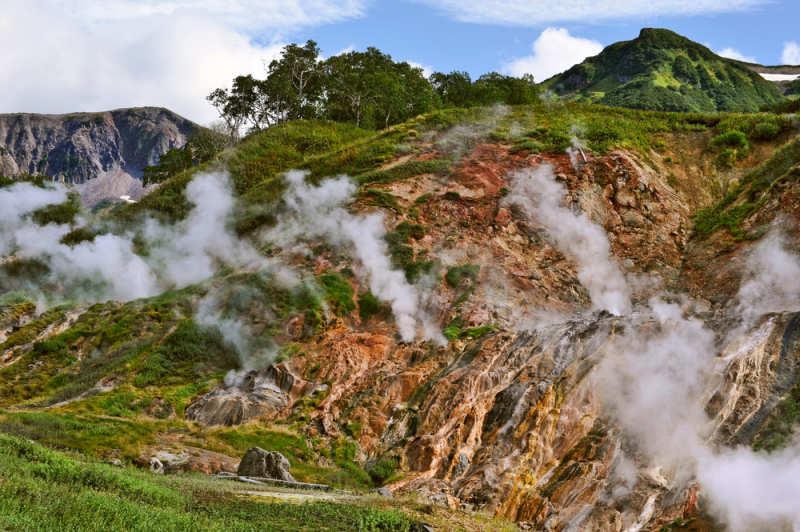Valley of Geysers, Russia

Valley of Geysers, the only geyser reservoir in Eurasia, is well-known throughout the world for its steaming lakes and geysers. The area has earned a reputation as an unusual destination thanks to its remote location.
The Geysernaya River Valley is 180 km northeast of Petropavlovsk-Kamchatsky and was only recently discovered by reserve worker T.I. Ustinova and lab assistant A.P. Krupenin on July 25, 1941. It is located close to a volcanic belt known as the East volcanic belt. A few months earlier, the first gazer was found. More than 40 geysers and numerous thermal springs are located within a 6 km radius of this canyon, which is 400 m deep and measures 4 km by 8 km with the Geysernaya River.
In the center, there is also a warm-ground ecological path where you can see the constantly pulsing boiling springs, hot lakes, geysers, mud pools, mud volcanoes, and vapor streams. The erupting geysers must be large and require specific thermodynamic conditions, which are only found in five places on the planet.
When the steep slopes of the Vodopadny (Waterfall) brook failed, breaking off in major water, snow, blocks, and other fragments sliding at 35–40 km/h and uprooting trees along the way, the greatest historical landslide in Kamchatka, which covered many beautiful waterfalls, thermal grounds, and geyser constructions, began on June 3, 2007, at 2.20 pm. Within the following three minutes, the second "dry" portion of the event occurred when the head of the brook split off, sending more massive materials tumbling down to create a dam in the river and a 150 m by 800 m wall, with the debris stretching for 1.7 km.













